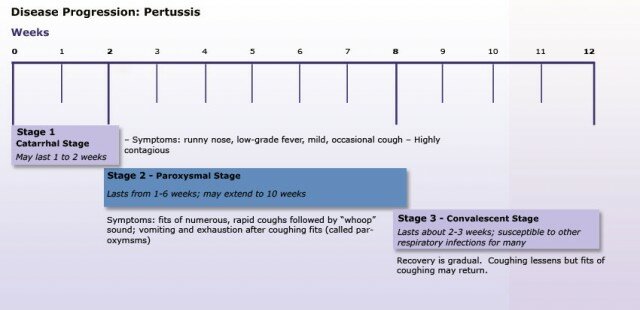
It’s Glimpses – holiday edition! Thanks to GregPierceImages for the festive edition to our Flickr pool.

It’s Glimpses – holiday edition! Thanks to GregPierceImages for the festive edition to our Flickr pool.
San Francisco-based Zaarly — the name is an online cutesification of the word “bazaar” — launched in May 2011 with a simple proposition: If you needed something done, you could put a request up with a dollar amount, and see if there were any takers; or, if you had a service you wanted to offer, you could post that, too. It was “kind of a cross between the old radio swap shops and eBay.”
Zaarly Storefronts refines that idea, offering online display windows for select small businesses. Zaarly helps with the presentation, supplying a photographer and editorial services. For the truly small business, Zaarly’s business model offers a way to advertise without an upfront cost, since it’s all paid for via a ten-percent convenience fee.
Zaarly provides a secure payment system, along with client-customer messaging, and promises refunds to anyone who’s unsatisfied with their purchase. There’s also a rating system (25 people love this house cleaning service).
Seattle’s Storefronts launched end of November with a few hundred options. Geekwire said: “The variety of goods and services is very impressive, as there’s everything from tasty food to yoga classes to hot tub service. The interface looks nice with the big images, and it’s also clean and simple.” You can of course browse with your Zaarly iPhone app or Zaarly Android app.
At the moment, there are plenty of holiday-related offerings. There are gifts, such as a dozen homemade marshmallows ($10) or a handmade pen ($20), but you can also hire Mitch to hang your Christmas lights ($83), or have the Crown Black Car service drive you from Ballard to the airport ($72).
Part of the fun is stumbling across people who will do that exact thing you need — check out Everyday Help, and the people who will watch your dog, deliver and install a large appliance, or wait for the cable guy for you. If you’re on a diet, maybe stay away from Baking & Cooking, unless it’s a gluten-free diet, in which case, Zaarly can help.
You have to apply to get a Storefront. They’ll want to confirm you really do serve the area in question, and that you’re good at what do you. “Buy from amazing local people” is the slogan. The Better Business Bureau gives them an A-, only because they’re still a young company.
Seattle’s mayoral races do not always showcase the city’s best and brightest. Some years — might as well admit it — it’s a slate of unqualified cranks. But this year, people have been pitching their hats into the exploratory campaign ring with such abandon that you might have lost track already of who’s running. Are you 100 percent sure you aren’t? Let’s take a moment to check.
1) Are you now or have you ever been a member of Seattle’s city council?
From the current council ranks, we have mayoral contender Tim Burgess, a progressive-values law-and-order candidate that the Seattle Times editorial board seems to have developed a crush on. Data geeks will like his evidence-based approach to problem-solving when it comes to most effectively applying resources, whether that’s police patrols or city government. If you follow his City View blog, you know he gives thoughtful consideration to a wide range of topics, while pushing steadily in areas where he wants to see change. Works well with others. He was wrong, of course, on the deep-bore tunnel, but then the city council had no leverage there to begin with.
Former council member Peter Steinbrueck is a perennial Seattle-lefty’s darling, a Harvard-lecturin’ populist-architect whose campaign, officially announced this morning, has gotten backing from Real Change Executive Director Tim Harris, the council’s Nick Licata, and David Bloom, the former deputy director of the Seattle Church Council. He extended his father’s preservation-minded brand by standing up to development-gone-wild mayors, but his latest lobbying, as a consultant to the Port of Seattle, against a “Sonics” basketball arena in the stadium district has gained him enemies. He was right on the deep-bore tunnel, but refused to run for mayor last election — now that he’s ready, is Seattle?
2) Have you ever been on the Greenwood community council?
Kate Martin is “a planner,” she told the Seattle Times, while fellow Greenwood activist (and current mayor) Mike McGinn is a lawyer. Her previous foray into political campaigning was just last year, when she ran for a position on the Seattle School Board, but lost. You may not have heard of her — older readers of the Stranger may remember her as the “Skate Mom” who built a skateboard park in her front yard — but she’s well known in Seattle school reform circles. Her challenge, as that Times story demonstrates, is to persuade people to return to the Greenwood-activist well after the McGinn administration’s rookie outing.
Mayor Mike McGinn, former president of the Greenwood community council, may be feeling unloved these days, with previous supporters falling in with old flames like Steinbrueck. This is largely a situation of his own backroom-deal-making, sharp-elbowed devising. His record on paper — haters to one side — is much more likable: After finally moving on from his doomed stand against the deep-bore tunnel, he’s kept the city’s credit rating strong despite the Great Recession, overseen the structural realignment of Seattle on a downtown-South Lake Union axis, pressed for a streetcar network that Seattle will fall in love with, cooked up a basketball arena deal, and just announced fiber-optic broadband for Christmas. Negatives: an austerity budget that’s left Seattle looking shabby, the Seattle Police Department, and his combative relationship with…most of the city, at one point or another.
3) Are you a popular gay legislator with a reputation for incremental victories or a former King County executive known for being greener than Kermit?
When state senator Ed Murray announced he was exploring a mayoral candidacy, he worried aloud whether he’d be able to keep up with fundraising, since he’s limited in that area while the Legislature is in session. More than $122,000 later, it doesn’t look like such a handicap. He told the Seattle Times that he’d work to restore Seattle’s influence in Olympia, something recent Seattle mayors have struggled with; and that he wants new leadership in the police department, better public schools, and to prepare Seattle for climate change (Murray was a cheerleader in devoting $4 billion to a tunnel without a transit element but he’s been more critical of the 520 bridge replacement project).
Unannounced as of yet are any formal ambitions that Ron Sims may have. The 12-year King County Executive and former HUD deputy secretary is more beloved in Seattle than in King County’s hinterlands, where his growth management strategies brought not-so-veiled threats from homeowners with soggy bottoms. A fiery speaker and visionary who’s (too) willing to touch on political third rails (like a state income tax), Sims has also been criticized for letting big ideas overtake his fiscal management of King County. Murray v. Sims would represent a real dilemma for greens and progressives who haven’t been seduced by Steinbrueck.
4) Are you a native Seattleite?
Charlie Staadecker is. 4th generation. Graduated Franklin HS. Staadecker got into the race early, to compensate for being a dark horse candidate without substantial political experience (he was elected twice to the Vashon Island School Board). He’d raised $40,000 by mid-November, with a strong core of retirees supporting the 69-year-0ld, who runs a commercial real estate company. You can’t count him out, just as you can’t count anyone out in a field this crowded, as the primary may make for some fine-slicing of electoral support.

It’s been 77 days since the Seattle Mariners finished in last place for the third year in a row, and they haven’t done a single thing to make anyone think they won’t be crashing in the basement again in 2013.
For once, money isn’t the obstacle. With Ichiro off the books, the Mariners have the cash to improve their roster. Problem is, no one will take it. This is no surprise — of the 46 contracts in baseball history worth more than $90 million, only four have been signed with teams that finished in last place the year before. To put it plainly: Good players do not want to play for bad teams.
And team management — wisely, in my view — has resolved not to overpay in an attempt to lure star players to Losertown, nor to gut the farm system in a desperate “win-now” trade.
So the Mariners are stuck in a Catch-22. They can’t attract an elite player at a reasonable price until they’re out of last place, but they can’t climb out of last place — not right away — without an elite player.
It’s a predictable but disastrous situation for an organization that has been a non-star both on and off the field. In 2012 the Mariners were even worse at public relations than they were at baseball. The team’s tin-eared opposition to a new Sonics arena was augmented by a colossal concessions foul-up during the best-attended game of the season, and, after another year of last-place baseball, unannounced price increases that pissed off their remaining season ticket holders.
The Mariners need to create some goodwill and excitement, which is why I propose that they release this letter:
Dear Mariners Fans,
Despite our best efforts, we weren’t able to significantly upgrade our roster for the 2013 season. Potential trading partners asked for a return that would’ve crippled our ability to compete in future years, and free agent hitters asked for long-term contracts that would’ve done likewise.
Of course we aren’t throwing in the towel on the 2013 season –but we do expect it to be another developmental year for our young core of players.
On the bright side, we are left with a significantly lower payroll than we expected. And, in return for the patience you have shown over the past few years, we would like to return that savings to you.
Effective immediately, we are cutting prices 30%.
That’s everything from box seats to signed baseballs to beer. This offer extends to our season ticket holders as well — each of you will pay 30% less than you did last year.
We expect to contend soon, but while we work toward that goal, we want to encourage you fans to fill Safeco Field and support our young players.
We could’ve spent this money on a free agent, but looking at the available market we felt that investing in bigger crowds and more support would be a wiser play. We’re convinced that loud, passionate crowds will help our young, hungry team develop better than an aging, financially-secure hitter would have.
We think that the talent we have in our minor league system will bring a World Series championship to Seattle in the next five years. We want you to be a part of our rise. Please come out to Safeco this summer and help motivate our young players to new heights. You’ll be glad you did.
Drastic? Unprecedented? Likely to cause fistfights in the corporate suite? Yes. But when your customer base has experienced the worst 10-year decline in your industry, drastic action is what’s needed. One thing I can say for sure — and I speak from personal experience, as I’ve yet to renew my season tickets this year — without something for fans to get excited about, attendance will decline yet again. As Yogi Berra said: “If people don’t want to come out to the ballpark, nobody’s gonna stop ’em.”

In the wake of the Newtown, Connecticut, shooting the internet has been abuzz with the usual misinformation that, handily, happens to correspond with the poster’s viewpoint. Even fake Morgan Freeman got in on it. But sorting out falsehood from fact sometimes results in surprising revelations.
“Cars kill thousands more people than guns do,” goes one pro-gun argument, “why don’t we ban those?” Now, it’s supposed to be an absurd argument, but depending on where you live, that first proposition may not be true. (Also I assume it’s unintentional that this comparison invites a rejoinder about written and in-person driving tests, regular re-licensing, and mandatory insurance requirements.)
Pop quiz: What kills more people in Washington State: cars or guns? As Slate’s Josh Voorhees discovered in a related story, in 2009, ten U.S. states had firearm deaths outnumber motor vehicle deaths. Washington edged into the top ten with 623 gun deaths, compared to 580 caused by cars. (That study using 2009 data is from the Violence Policy Center.)
There’s a secondary surprise embedded in the first, which is that while firearm deaths have been rising slightly, nationally, over the past decade, motor vehicle deaths have dropped significantly since 2006.
(One contributing factor is the recession, as well as a general tendency toward driving less. It’s also suggested that cars have gotten safer, but the change is so abrupt, I find that hard to credit as a primary factor. It may be that drivers are safer — given that a chunk of the under-30 demographic is not bothering with cars, and that under-30 drivers are the least experienced.)
I wanted to confirm the VPC data, so I checked with Washington’s Department of Health death statistics. For 2009, they list 597 firearm deaths, compared to 538 motor vehicle deaths. In 2010, 592 to 510. Oho! you may protest. Those firearm deaths include suicides: 462 suicides, in fact, to 113 homicides in 2010. It’s true. But everyone killed by a gun is still a dead person. Besides, as a therapist once told Keira Knightley, suicide is a shy person’s homicide.
That’s instructive, I think, when you’re discussing access to guns, and the possibility of keeping them out of the hands of the deranged and homicidal as a class. Very few gun sellers would sell to someone who said something about planning to kill themselves — even someone who is obviously depressed, but gives no suicidal signs. Yet look how often people are able to use guns to kill themselves.
The lesson is that “suicidal” and “homicidal” are largely transient states for most people, and chronic for a very unhappy few. But since we have failed to bring that much larger number down, then it is unlikely that we’ll have much impact on the smaller without changing methods substantially.
There is a secondary realization embedded here, too. It seems a shame, but maybe shame is the problem. It’s a decades-long trend that more people commit suicide with guns than homicides. “Although most gun owners reportedly keep a firearm in their home for ‘protection’ or ‘self defense,'” says the American Foundation for Suicide Prevention, “83 percent of gun-related deaths in these homes are the result of a suicide, often by someone other than the gun owner.”
By the numbers, gun control discussion should revolve around the death count from suicides alone. Is it possible there’s a link between this unspoken massacre and the denial (and forgetfulness) of more well-publicized ones? In this context, talk about prying guns from someone’s cold, dead hands isn’t a boast; it’s an actuarial statement.

“Infants younger than 6 months account for 90 percent of all pertussis-related deaths and the majority of hospitalizations,” reads the Seattle & King County Public Health brief on whooping cough (pertussis). That statistic came into stark relief last Thursday, when a newborn baby died from a cases of pertussis. KOMO News says further details are being withheld to guard the family’s privacy.
The county details the effects of the rise in whooping cough cases the past two years:
The risk of severe pertussis, including hospitalization and death, is higher for infants than any other age group, and two infant deaths occurred in Washington during 2011. King County pertussis cases increased significantly in 2011 compared to 2010 (97 and 59, respectively), with infants younger than one year comprising 16 percent of the 97 reported cases. In 2011, 20 percent of infant cases required hospitalization and infant cases continue to occur in 2012.
As of December 8, 2012, King County had had 726 cases of whooping cough, the second-most in Washington, following Pierce County’s 736. (In terms of incidence rate, Skagit, Yakima, and Whatcom counties have been hardest hit — King County’s cases are spread out among its almost two million residents.)
King County health officials say it isn’t enough to keep babies away from coughing strangers — too many cases are contracted from the mother or family members. Vaccination is highly recommended for anyone who will be in contact with an infant.
It’s not hard to find, on the internet, someone pooh-poohing the hysteria over whooping cough because their kids got it and it wasn’t that big of a deal. “Sentimental medicine,” an article in the January issue of Harper’s, details some of our modern-day vaccine fears — while noting the this story is as old as, perhaps older than, vaccines — but then turns the question of why to get vaccinated around. Because, yes, you could play the odds and perhaps survive, yourself.
“Vaccination works,” my father, a doctor, tells me, “by enlisting a majority in the protection of a minority.” He means the minority of the population that is particularly vulnerable to a disease. The elderly, in the case of influenza. Newborns, in the case of pertussis.
“Those of us who draw on collective immunity owe our health to our neighbors,” writes the author, Eula Biss. She compares it to the practice of donating to blood banks, and the feeling (or sentiment) that it’s best to keep oneself in the black regarding these accounts. If you have never had to think about blood donation prior to you, a family member, or acquaintance needing a transfusion, that’s because so many other people did think, in advance.
The protection of a vaccine isn’t just in the vaccine–it’s in the number of people who get vaccinated. Just as we’re likely to estimate ourselves the luckiest person in a casino, many like to roll the dice with disease. But vaccination, as Biss emphasizes, isn’t all about you. It’s about keeping others safe, too.
The pertussis vaccine is often criticized because it’s not 100-percent effective. But you don’t need 100-percent effectiveness to rid pertussis of its ability to reach epidemic levels–which Washington surpassed earlier this year. Pertussis has a natural variability, so its decline this fall doesn’t mean much in terms of any acquired protection. It tends to spike every two to three years, if it gets a chance. You can find out more about low-cost whooping cough vaccines here.